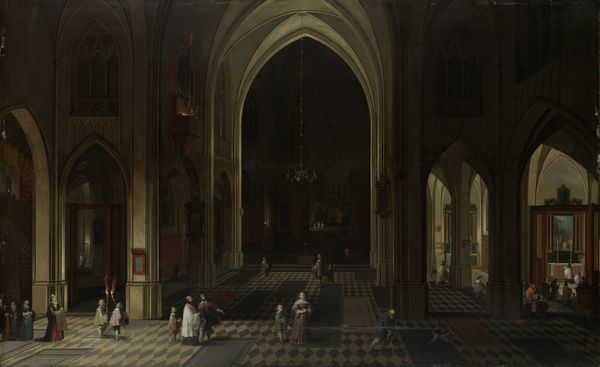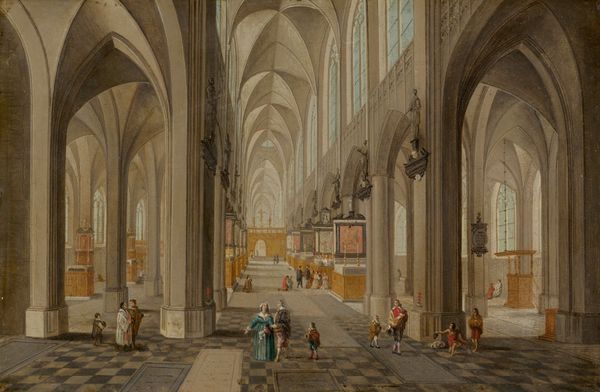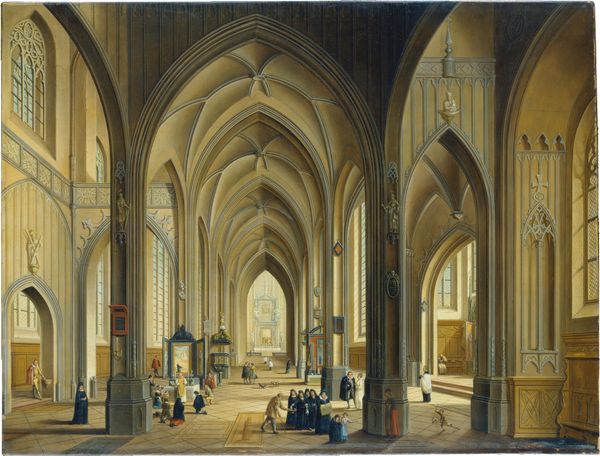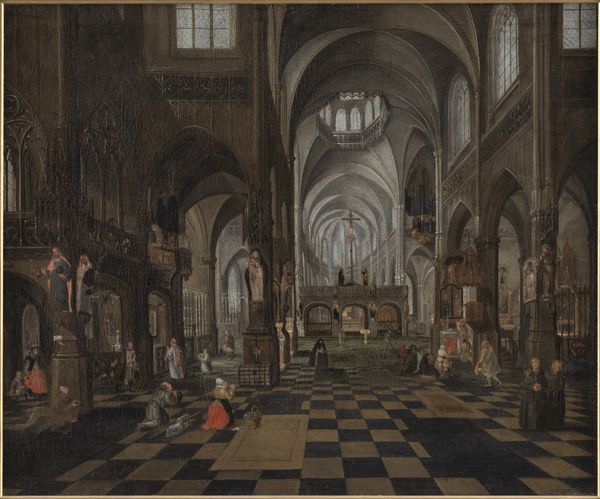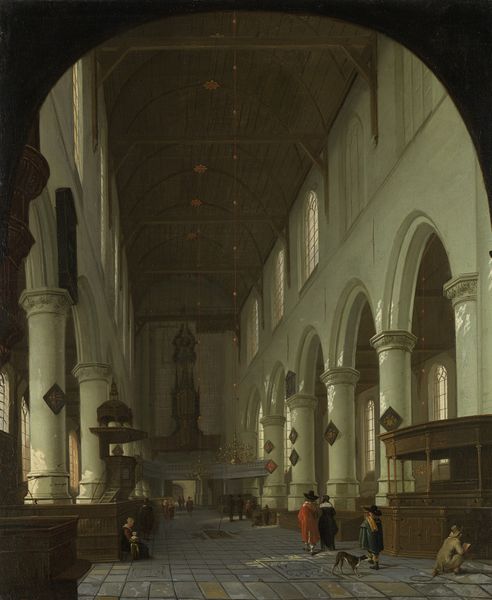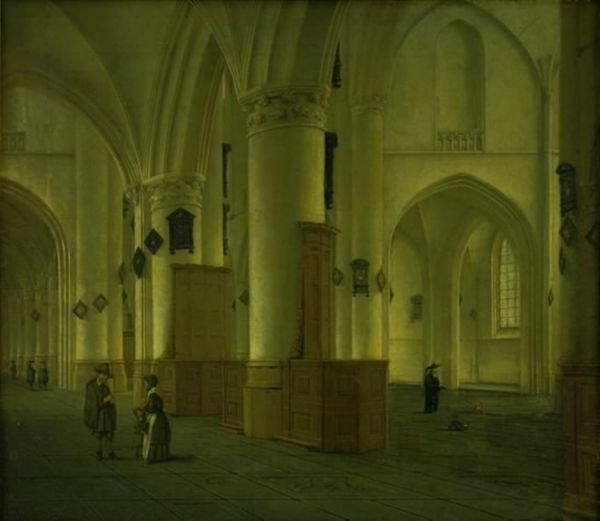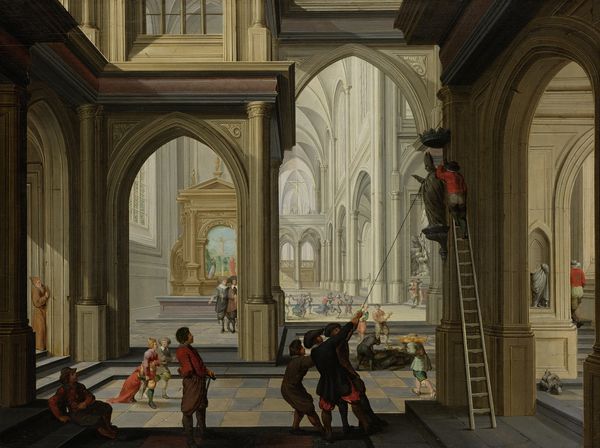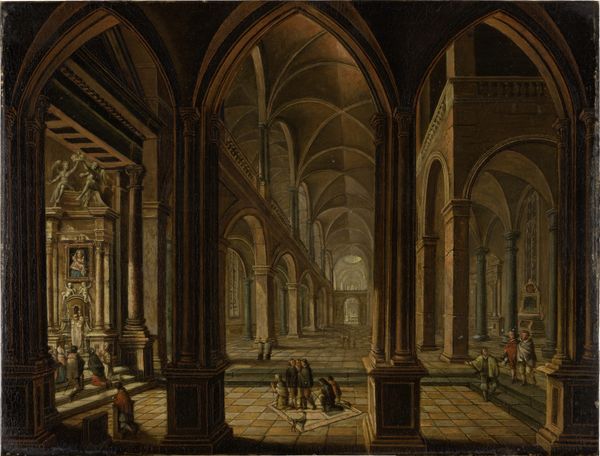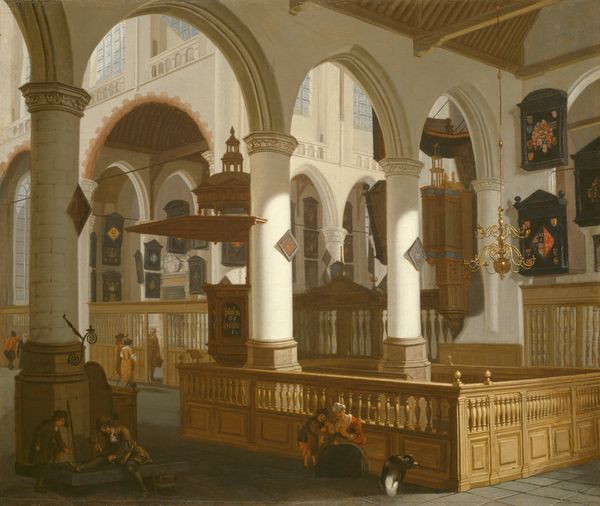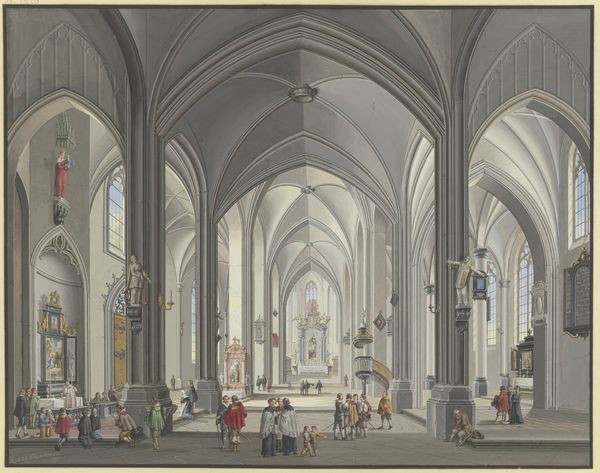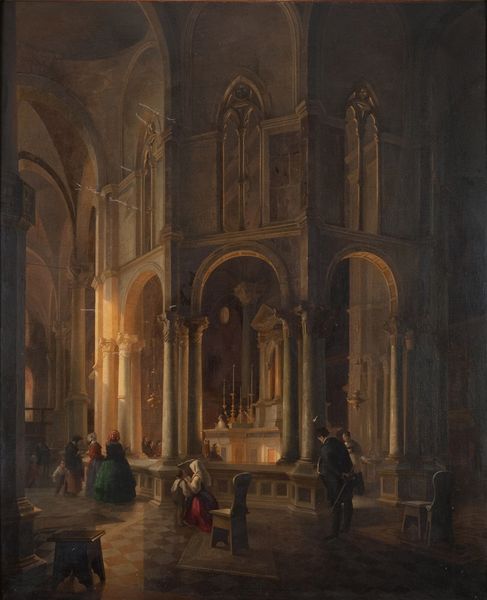
painting, oil-paint, architecture
#
building study
#
medieval
#
painting
#
oil-paint
#
landscape
#
perspective
#
genre-painting
#
architecture
#
historical building
Dimensions: support height 24.4 cm, support width 34.6 cm
Copyright: Rijks Museum: Open Domain
Curator: The atmosphere in this image is striking – almost hushed. Editor: Yes, there's a deliberate calmness to Peeter Neeffs' "Interior of an Imaginary Gothic Church, Looking East," dating from around 1655-1660. Look at the checkered floor; it gives a sense of spatial order in contrast to the grand scale of the church itself. Curator: Indeed, that chequered floor points to labor and craft. Each tile carefully placed, a grounding element in this enormous, faith-driven space. But let's talk about materials. What can you tell us about how Neeffs created this? Editor: Neeffs used oil paints, allowing him to capture intricate details and create depth with light and shadow. Now, thinking historically, these church interiors became popular subjects for artists like Neeffs in the 17th century, a reflection of the socio-political power structures and religious fervor of the time. Cathedrals represented not only religious belief but also civic pride and economic prosperity, after all. Curator: Absolutely. The painting depicts more than a house of worship; it reflects production in its making. Neeffs didn't just conjure this space from imagination. His understanding of architecture and material application translates into this compelling representation. But did he intend any subtle criticism regarding wealth accumulation by portraying such a grandiose site of expenditure? Editor: It’s hard to say definitively without knowing more about his patronage, but it's a good question. Considering the public role of art then, the imagery might well address notions of earthly versus spiritual power or piety and how they come to relate within such massive religious sites. The inclusion of figures, seemingly dwarfed by their surroundings, also highlights this. Curator: They emphasize the scale while demonstrating society organized within and because of the structures people construct. They almost appear lost, their presence reminding viewers of their small role amidst it all. I can imagine viewing it in a private collection – thinking of one’s place amongst capital and societal structures. Editor: So we see art functioning here, both historically and materially: displaying existing social conditions, and perhaps causing new understandings of societal relationships. Curator: Precisely! Seeing this interior laid out for a viewer highlights power as well as artistry. Editor: Ultimately, a wonderful interplay between artistic representation and historical context.
Comments
No comments
Be the first to comment and join the conversation on the ultimate creative platform.
